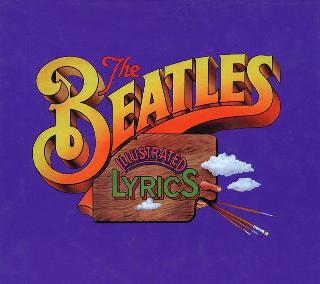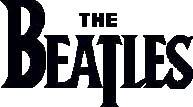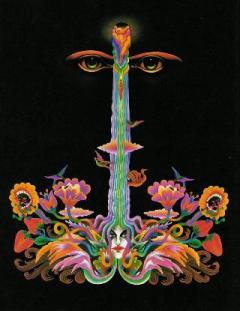Index
Home
Vorige
Hey Jude
Composer(s) : Lennon and McCartney
Year : 1968
Chords/Tabs: Hey Jude
Notes on "Hey Jude" (HJ)
"Hey Jude" is such a monumental favorite, I'm almost disuaded from touching it
because of the pressure to say something profound. I'll go for it nonetheless,
even if I do get everything wrong, because it's such a good illustration of two
compositional lessons -- how to fill a large canvas with simple means, and how
to use diverse elements such as harmony, bassline, and orchestration to
articulate form and contrast. There's also the subtle matter of the way
that time in this song is divided into classically proportional durations,
but more on all of this to come.
The Long Form
Much has been made of the unusual length of this song (7:07), particularly
for a single, but it's the means by which this length is sustained (not the
length per se) that's of interest.
There are many other songs by contemporaneous artists which break the
3-to-4 minute length barrier, though the examples which come immediately
to mind use a variety of techniques, *none* of which is used in HJ: an
extended improvisational break in the middle ("Light My Fire"), the stringing
together of several shorter songs, medley-style ("MacArthur Park"), or
simply a long series of verse/refrain couples ("Sad Eyed Lady of the Lowlands").
The Beatles opt here instead for an unusual binary form which combines
a fully developed, hymn-like song together with an extended, mantra-like
jam on a simple chord progression. It will become clear from a detailed
examination of HJ just how neatly the two halves complement each other, and
from what simple musical materials they are constructed.
The Song
The first half of HJ is in one of the more standard song forms:
Verse - Verse - Bridge - Verse - Bridge - Verse
Furthermore, a number of factors lend to the music a four-square, almost
classical flavor:
- the absolutely pure F Major diatonic harmony; the only chromatic exception
being the relatively tame use of the F7 chord (V-of-IV) to pivot into the
bridge section.
- in the verse, the presentation of all the chords in root position, and
the stodgy harmonic rhythm of one chord change per measure; the only exception
being the repeat of the C chord (V) in measures 2 and 3, thereby creating a
very slow, almost subliminal syncopation.
- in the bridge, the Bach-like walking bassline which, by the way, is a key
source of the perceived contrast between the bridge section and its surrounding
verses; the bassline of the verse, after all, simply follows the roots of
the chord changes.
- in the melody, the pervasive use of appoggiaturas and "escape" notes.
- and, in the right hand of the piano part, the oscillating chordal style.
It's interesting to note how some of the four-square feeling is gently relieved
by extending the last phrase of the verse an extra measure right before the
bridge, and by the short, "extra" phrase of two measures at the end of the
bridge, leading back to the verse; that latter phrase, with its "nah-nah-nah"
lyrics also providing an associative link with the jam section.
The Jam
The second half of the song is built on no less than eighteen and a half
repetitions of the following chord progression:
F E-flat B-flat F
F: I flat VII IV I
Not only does the repetitive nature of this section create an obvious
contrast with the symmetrical form of the first half, but there are two
other, more subtle sources of contrast:
- the use of the flat-VII chord here gives the jam session a decidedly modal,
Mixolydian flavor which contrasts with the almost simplistically "straight",
diatonic Major mode of the first half.
- the "nah-nah-nah" vocal melody of this jam, with its emphasis on the
F-natural at its apogee, creates a freely dissonant 9th against the E flat
chord; it's a small effect, yet so pungent that I dare say it's one of
the signature characteristics of this track. If you look back at the first
half of the song, you'll note that in contrast, all of the plentiful melodic
dissonance to be found there is carefully, consistently resolved.
The Arrangement
When we turn to the arrangement, we find not so much a source of contrast,
as we do one of formal articulation.
In the first half, in particular, we have an excellent, fairly late example
of the progressive layering technique that first appeared as a Beatles hallmark
several years earlier. A simple, section-by-section narrative reveals both
how the texture is increasingly thickened over the first three sections, and
how the final two verses continue to present deft touches of variation on
what has come before:
Verse 1 - Piano solo with Macca vocal, single tracked.
Verse 2 - Add acoustic rhythm guitar, and tambourine on the offbeat.
Also add backing vocals singing "Ahhhh" in the second half
of the verse.
Bridge 1 - Add drums and tapping cymbals. Also add bass, in conspicuous
walking style, no less.
Verse 3 - Second half has backing vocals in parallel thirds with lead.
Note the stray backing vocal with the terrific anticipation
of the phrase "so let it out and let it in" from the next bridge.
Bridge 2 - As in Bridge 1. Neither adding to or varying the arrangement
of the second bridge sets a good example of "avoidance of
foolish consistency". I think it also underscores the the
relationship of the two bridges to each other, as well as
their contrasting role with respect to the verses.
Verse 4 - Note Macca's melodic ornamentation of the initial "Hey Jude"
phrase, and how the parallel thirds of the backing vocal follows
all the way through this verse. There's also the final
vocal flourish ("better, better, ...") which leads to the jam
section; it actually sounds triple tracked - two Maccas singing
the flourish itself, and a third singing "make it, Jude."
Macca's performance of that flourish, by the way, is quite
a tour de force. It's an appoggiatura'd arpgeggio covering
just over two octaves from E below middle C all the way up
to high F, eleven notes above middle C -- real soprano
territory -- and he does it without having to fully overblow
his voice into falsetto. Though he was sufficiently insecure
about his performance to have double tracked it here, you
can get a more pristine, single tracked audition of this feat
on the Take 9 rehearsal version, found on URT and other
popular rarities.
The arrangement and the recording of the jam section also contain some
interesting strategic details:
Most notably, in addition to all the instruments used in the first half
(with the exception of the bass guitar, according to Lewisohn), the
repeated ground bassline of the jam is underscored by sustained doubling of
a small orchestra of 36 players; the session documentation lists a full
variety of strings, woodwinds, and brass, but what you hear mostly on the
finished recording are bowed strings and trumpets. In general, this technique
lends an overall feel of weightiness and measured motion to the music,
curiously in contrast to the otherwise bustling, rocking foreground texture
of the piano, drums, and screaming Macca.
Note how the doubling of the bassline is itself progressively layered over
the course of several repetitions of the mantra-like phrase:
- Repeat 1 - bass fiddles in unison with ground bass.
- Repeat 4 - add mid-range strings (cellos/violas ?) and trumpets
two octaves above ground bass.
- Repeat 8 - add violins at 4 octaves above ground bass, though
they sound like they sustain a simple F natural rather
than following the melody of the bassline.
The curious thing about the recording of this jam is the extremely long
fade-out which begins as early as the tenth repetition of the mantra-like
phrase, at a point where there are still a full two minutes of music left
to come.
This gambit, combined with the sensation created by the sustained-note
doubling of the bassline, creates an astonishingly transcendental effect.
I stumble for metaphors to describe it, but the sorts of things which
come to mind are "the music of the spheres", "the long caravan which passes
slowly by", or perhaps, a painting in which the perspective is so deep that
the vanishing point (of singularity) seems to approach the infinite. (Get
this guy out of here, would ya', please!)
The Time
If you chart out the durations of the major sections of HJ, you find that,
as a rule, they divide up the time into not-quite symmetrical, golden-mean
proportions. Note, by the way, how the jam happens to be the longer of
the two major sections:
minutes:0 1 2 3 4 5 6 7
|-------- song ---------|--------- jam section ---------|
|-- fade out ---|
I would dare to suggest that on top of everything else we've discussed,
this proportional division of time is yet another source of the satisfaction,
and relaxation one experiences in this song.
So, What's It All About ?
I've never been quite sure, myself. The jam section taken alone would
seem to point in the thematic direction of "spiritual enlightenment",
obviously something of a preoccupation of some of the Beatles during the era
in which this song was composed. But the older I get, the more convinced
I am that the main message here is to be found in the first half -- the
"imperative" to now pursue one's destined love the minute either you have
found her, or she has found you. Yep, I do believe that once you internalize
that much, the transcendent, blissful joy of the second half falls right into
place.
Regards,
Alan (awp@prism.tmc.com)
---
"They tried to fob you off on this musical charlatan,
but *I* gave him the test." 010590#14
--- H.B., Ms. Campey
Copyright (c) 1990 by Alan W. Pollack
All Rights Reserved
This article may be reproduced, retransmitted, redistributed and
otherwise propogated at will, provided that this notice remains
intact and in place.
Ook op Past Masters, Vols. 2:
Ook op Anthology 3:
Ook op 1967-1970:
Ook op 1:
Ook op Love:
(c) 2024 Serge Girard


 (c) Alan Aldrigde, The Beatles Illustrated Lyrics
(c) Alan Aldrigde, The Beatles Illustrated Lyrics